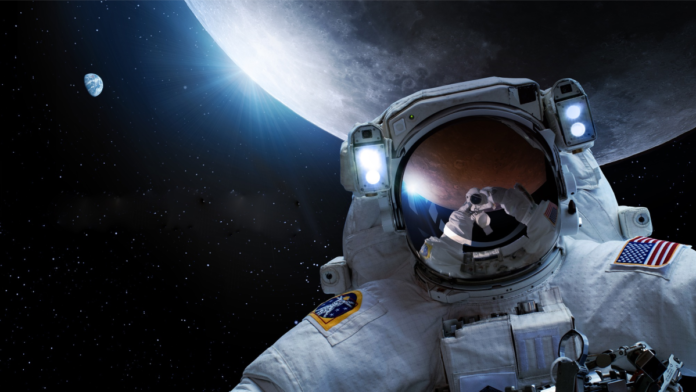We’ll soon learn the identities of the first four people to journey to lunar realms in half a century.
On Monday (April 3), NASA and the Canadian Space Agency (CSA) will jointly announce the names of the four individuals flying on the Artemis 2 mission. Events will stream live from Ellington Field, near NASA’s Johnson Space Center in Houston, at 11 a.m. EDT (1500 GMT).
You can catch the NASA webcast here at Space.com, via NASA Television (opens in new tab). If the CSA streams its own event at its headquarters near Montreal, we’ll provide that as well.
Artemis 2 is slated to launch no sooner than November 2024 on a trip around the moon. It’ll be the first time any human has come close to the moon since Apollo 17 went to the lunar surface in December 1972. The Artemis program will include more representation, NASA has pledged, including the first woman and the first person of color on moon missions.
Related: NASA’s Artemis program: Everything you need to know
There is speculation about who is on board Artemis 2, but nothing has been officially confirmed at this time. Canada has four astronauts (opens in new tab) to choose from, while NASA lists more than 40 (opens in new tab) active individuals.
The NASA-led Artemis 2 brings in international partners via the Artemis Accords, currently signed by 23 nations including Canada. The country has been supplying Canadarm and other robotics for the American space program for more than 40 years. The CSA earned its seat on Artemis 2 by pledging, via the company MDA, a future Canadarm3 robotic arm to service NASA’s planned Gateway space station in lunar orbit.
Artemis 2 represents the first time that NASA has been able to gain bipartisan political support and fully fund any crewed moon mission since the days of Apollo, after other presidential administrations tried and failed.
The Artemis program renamed and accelerated activities that NASA was undertaking in the 2010s to return humans to the moon. Then-President Donald Trump’s Space Policy Directive 1 in 2019 tasked the agency with focusing on lunar missions, and current President Joe Biden committed to continuing with Artemis. The first crewed landing mission of the program, Artemis 3, aims to put people down near the moon’s south pole in 2025 or thereabouts.
The Artemis 2 hardware has mostly been tested in space already, via the uncrewed Artemis 1, which flew three mannequins and the Orion spacecraft around the moon in late 2022 and saw the huge Space Launch System rocket ace its debut liftoff.
Artemis 3 is awaiting surface spacesuits from Axiom Space, which saw a partial reveal weeks ago, along with the Starship landing system from SpaceX that may be tested in orbit as soon as next month.
Revealing Canada’s first moon astronaut will be the second big announcement for the Canadian government in recent days. In late March, while Biden was visiting Canada, the CSA committed to extending its International Space Station participation to 2030. NASA, the European Space Agency and Japan have all previously agreed to the six-year extension, while Russia may leave earlier to pursue other projects.
Elizabeth Howell is the co-author of “Why Am I Taller (opens in new tab)?” (ECW Press, 2022; with Canadian astronaut Dave Williams), a book about space medicine. Follow her on Twitter @howellspace (opens in new tab). Follow us on Twitter @Spacedotcom (opens in new tab) or Facebook (opens in new tab).

